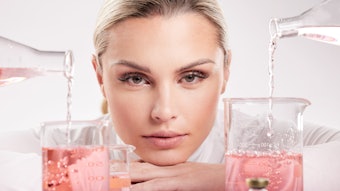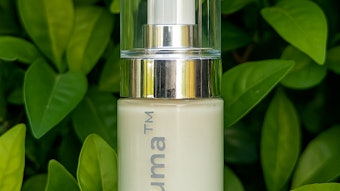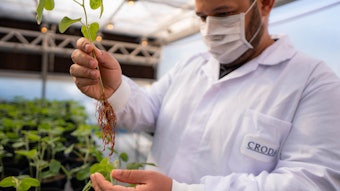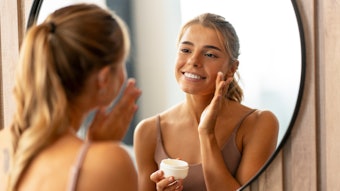Leading up to a Personal Care Product Council presentation at the Natural Beauty Summit America (May 14–15, 2012, New York) conference, the council's Francine Lamoriello, executive vice president, global strategies, and Farah Ahmed, chair, natural/organic cosmetics committee, discuss efforts toward harmonization of cosmetic regulations and standards, as well as the differences and similarities of U.S. and EU regulations.
Q: Are European regulations, specifically the new Cosmetics Regulation (Regulation (EC) No 1223/2009), impacting or influencing the regulatory climate in the U.S.?
Francine Lamoriello: EC No 1223/2009 does not directly impact the way in which our products are regulated in the U.S. However, we know that FDA is aware of ongoing regulatory developments in Europe and other parts of the world, and is participating in a collaborative harmonization effort with regulators and industry from the EU, Japan and Canada—the International Cooperation on Cosmetics Regulation (ICCR), which further exposes FDA officials to regulatory developments in these regions.
Q: Can you provide some of the key points of difference between European regulations and U.S. regulations? What is or is not regulated in the U.S.?
Lamoriello: The U.S. and EU have slightly different ways of regulating the cosmetic and personal care industry, but both systems are based in the concept of [brand owners’] responsibility for putting safe products on the market, and neither require products to be pre-approved by regulatory authorities. In-market oversight by regulators in both markets further assures consumers of the highest degree of safety.
While some may point to the fact that the EU regulation (Annex II) bans more cosmetic ingredients than does the U.S. FDA, we do not believe that this difference has any impact on product safety. For example, an examination of Annex II of the EU Cosmetics Directive, a list of approximately 1,300 banned ingredients, reveals that over 75% of those chemicals are not used or never have been used in cosmetics in the U.S. or Europe. For example, the EU list includes substances such as jet aircraft fuel, various petroleum refinery byproducts and carbon monoxide.
Another difference between the EU and U.S. systems of regulating cosmetics is that the EU allows the marketing of cosmetic products with certain medicinal effects while the United States has required extra regulatory hurdles because they are classified as drugs. Some of the substances include sunscreens, anticaries toothpaste [those that fight tooth decay] and lip balms. Even though color additives are not classified as over-the-counter (OTC) drug actives, they are also subject to more regulatory scrutiny in the U.S. than they are in Europe.
But again, overall, we believe that both systems are fairly similar in their outlook and safe outcomes.
Q: What are the implications of the different regulatory environments for brands selling in both European and US markets?
Lamoriello: As the U.S. and EU regulatory systems are so similar, there are very few implications for marketing the same products in both markets. Of course, as previously mentioned, it is possible that new ingredients and innovative products may be more quickly offered in Europe if these are considered OTC in the U.S. and therefore must go through a “new drug application,” which can be very costly and time consuming. In addition, there are different labeling requirements, for example, for certain commonly known ingredients that pose added costs and complexities to inventory controls. We are hoping to work with FDA and other regulators to seek more comprehensive harmonization of labeling requirements.
Q: Are there any specific implications for companies utilizing natural ingredients or making natural claims?
Farah Ahmed: There are no specific implications for natural cosmetic products or ingredients. It is important to note that all cosmetic products and ingredients, regardless of whether they claim to be natural, must be substantiated for safety and must possess substantiation for the claims they make prior to going to market.
Q: One of the Personal Care Products Council’s focuses in 2011 was advocating for international harmonization of cosmetic regulations throughout the world. Are there any updates you can share or information on what’s on the immediate horizon?
Ahmed: We are working toward harmonization of appropriate cosmetic regulations and standards to facilitate trade, minimize unnecessary waste and promote public health. At the Organization of International Standardization (ISO), the U.S. (industry and FDA) is actively involved in harmonizing a number of aspects of manufacturing and testing of personal care products. In the U.S., ISO standards are voluntary, but are widely followed by cosmetic manufacturers. For example, most recently, ISO has finalized sunscreen test methods.
Lamoriello: Through the International Cooperation on Cosmetics Regulation (ICCR), regulators and industry from the U.S., EU, Canada and Japan have been working for several years to achieve common principles and guidelines in a number of important areas—including nanotechnology, trace levels of heavy metals, cosmetics good manufacturing practices and the promotion of alternatives to animal test methods. The work being done this year will be presented at the 6th annual ICCR meeting in July 2012, which will be held in Washington, DC. For the first time, regulators from six other countries have been invited to meet with the ICCR regulators in a “Global Regulators Forum” and to observe the ICCR meeting between industry and regulators. It is our hope that the work achieved in ICCR will be considered by other countries that are developing their own regulatory systems and practices.
We have also been very supportive of initiatives to include regulatory harmonization in bilateral and multilateral trade initiatives being undertaken by the Obama Administration. For example, we are very pleased that harmonization and removal of trade barriers in cosmetics products is being discussed in the Trans Pacific Partnership (TPP) negotiations. We have also worked closely with our sister associations in Canada and Mexico to encourage harmonization of cosmetics regulation as an area to be treated in the North American Regional Harmonization efforts that are underway. Most recently, we participated in a meeting of the U.S.-Canada Regulatory Cooperation Council (RCC) to support a work plan on these issues.
At the Natural Beauty Summit America, Ahmed will discuss the future of organic and natural ISO standards, as well as explore U.S. standards for organic and natural cosmetics. Readers of GCI can take 20% off the registration cost to Natural Beauty Summit America by entering the code GCI20.










